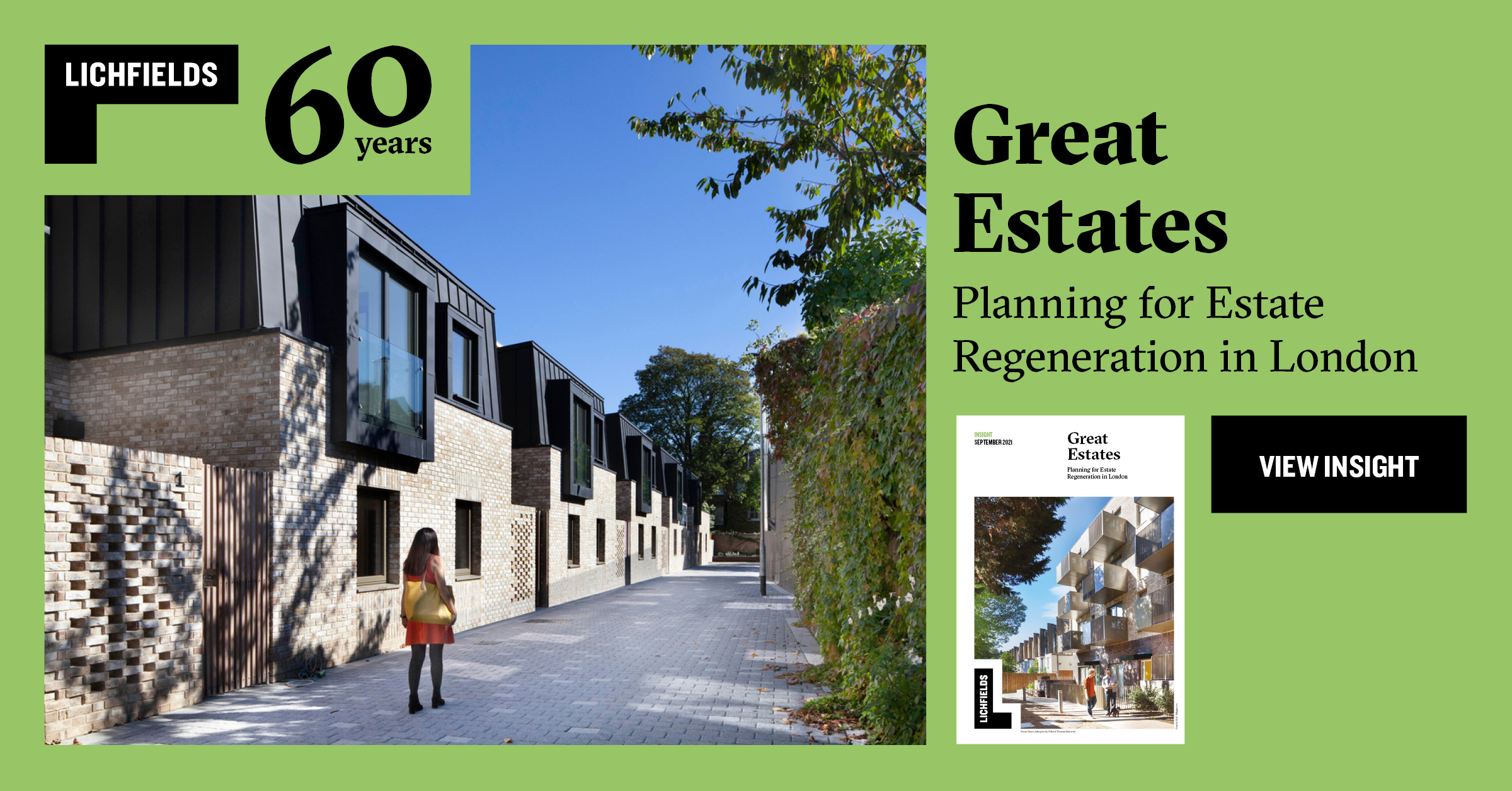A unique aspect of estate regeneration projects is the potential requirement for a residents’ ballot to demonstrate support for the proposals being put forward on an estate. This requirement places residents at the heart of any project, giving them the opportunity to fundamentally support or object to regeneration proposals, in a clear yes/no vote.
For good reason, the Mayor of London is keen for residents to have a clear say in what happens on the estates where they live to ensure they are an integral part of the process. In reality, the Mayor has limited planning powers to enforce best practice on estate regeneration projects. Controlling access to GLA funding is one of the only ways he can exert power. It is now over four years since the requirement for a residents’ ballot became mandatory for any development in London involving the demolition of social housing and construction of more than 150 homes (of any tenure) which is subject to GLA capital funding.
To date, the requirement for a residents’ ballot has applied to a relatively small number of the estates currently coming forward for redevelopment. As of November 2022 (the latest data available from the GLA), 21 estates regeneration projects which were subject to GLA funding, had registered a successful positive ballot outcome and 51 projects had sought an exemption. The latter figure reflects the long-term nature of these types of projects with planning permission often granted prior to the ballot requirement being in place.
We are aware of numerous other schemes, which were not subject to funding restrictions, but where landlords have elected to undertake a residents’ ballot without being required, although there is no centralised record of these balloted schemes. We believe that voluntary ballots are becoming more commonplace as Registered Providers, Councils and development partners are recognising their prospective value.
The ballot requirement is likely to apply to other emerging projects in receipt of the Affordable Homes Programme funding. Many of the new homes covered by this funding are likely to be provided on housing estates, which, as identified in our
Great Estates Insight, offer an unparalleled opportunity to help tackle the capital’s acute housing crisis, whilst delivering better homes, enhancing neighbourhoods and improving lives. Despite recent changes to the grant funding regime to exclude funding for the reprovision of existing homes (trigging a recent flurry of activity to implement permissions by April 2023) and growing viability challenges, this sector still represents a significant opportunity to deliver the homes needed in London.
The residents’ ballot has in the past been an area of disagreement between the Mayor and Government. At one point the Government openly criticised the ‘onerous conditions’ imposed by the Mayor on estate regeneration, particularly the need to run a residents’ ballot, and suggested that these requirements will jeopardise housing delivery. Others have criticised the extensive design work and engagement to be undertaken prior to the ballot process, often at risk before there is certainty on the level of support for the changes. This work can be time consuming and requires significant investment to ensure success. Most recently, Siân Berry, Green Party Member of the London Assembly, called for reform of the process, suggesting there is failure to ensure residents are having a say in a fair and democratic way.
Notwithstanding this, the underlying purpose of the residents’ ballot is to foster positive and inclusive engagement on developments which perhaps have the greatest direct effect on people’s lives. Many Councils and RPs are committed to running ballots on regeneration schemes, almost all ballots to-date have been overwhelmingly positive and the frequency and scale of estate renewal projects in London continues to grow. Lichfields’ view is that the Mayor’s approach to estate regeneration and the ballot process provide clarity and support for well-conceived development at London’s estates. This has certainly been our experience at Barnsbury where an overwhelmingly positive ballot outcome of 73% voting in favour of regeneration was achieved in August 2021. The ballot underpinned a constructive process of engagement with Islington and the GLA and ongoing resident consultation, prior to securing planning permission in early 2023.
The emphasis on collaboration and inclusion, and the introduction of the ballot provides a mandate for regeneration and the Mayor’s approach allows these often sensitive and charged developments to be progressed in a manner that is acceptable both politically and to communities.
For a ballot to be successful, it must be integrated as part of an open and inclusive engagement strategy, in which residents are consulted multiple times throughout the project. This background work is necessary to ensure that by the time the ballot is approached there is a groundswell of support for the proposals. Lichfields’ research found that a successful ballot outcome carries significant weight throughout a project, illustrating transparency in the engagement process and providing clear and unambiguous evidence to Planning Officers and Councillors of residents’ support for estate regeneration.
In this context, we outline below a few of the key principles to consider when preparing for a residents’ ballot.
Residents ballot - key principles
- Eligible Residents: Any resident over 16 living on the estate for over a year is eligible to vote.
- Defining the ‘Estate’: The ballot should be estate-wide, not limited to the immediate area of development or the homes being demolished. There can however be challenges applying this principle to very large estates where only a small amount of development is taking place. The GLA has in our experience taken a pragmatic view in agreeing a suitable area to be balloted. However, it can be an area of contention and further guidance has been published, advising on how an estate boundary can be defined. This guidance makes it clear that where there is uncertainty as to what constitutes the estate boundary it is incumbent upon the Investment Partners (RP/Council/JV partner etc.) to propose a boundary with a clear rationale and a number of pertinent considerations are listed - such as residents’ conceptions of what constitutes their estate, the typology and /or age of buildings and geographical boundaries such as road or train lines etc.
- Landlord’s offer: This is the proposition residents vote on in the ballot. It must include at least a minimal level of information (objectives; design principles; approx. quantum of new homes and tenure mix; decant and phasing strategy; and commitments to ongoing consultation). In our experience though, more information and effective communication maximises the prospect of a positive outcome.
- Timing: There is no procedural link between the timing of the ballot and the planning process, but there are clear reciprocal benefits in aligning the two. In Lichfields’ view, the ballot should be run when pre-application discussions are at a sufficiently advanced stage, the scheme is being crystallised and in-principle support has been secured from Officers. An earlier ballot has less chance of success or might result in abortive work if a development is amended later (and the GLA can reclaim funding if a planning permission materially deviates from the Landlord’s Offer).
- Majority required: the ballot must offer a ‘yes/no’ vote on the Landlord’s Offer and a simple majority is required to pass the vote, though a large majority demonstrates unambiguous support and clearly carries more weight with planning officers and decision takers. There is no minimum threshold for turnout.
- Repetition: There is no limit on the number of ballots that can be held and a revised Landlord Offer can be put to residents in the event of a ‘no’ vote or if revisions are required. This gives some comfort and flexibility, but the aim should clearly be to secure a ‘yes’ vote first time around.
Further guidance on the residents’ ballot and other themes associated with estate regeneration can be found in Lichfields’
Great Estates Insight.
Image credit: Edmond Dantès via Pexels




